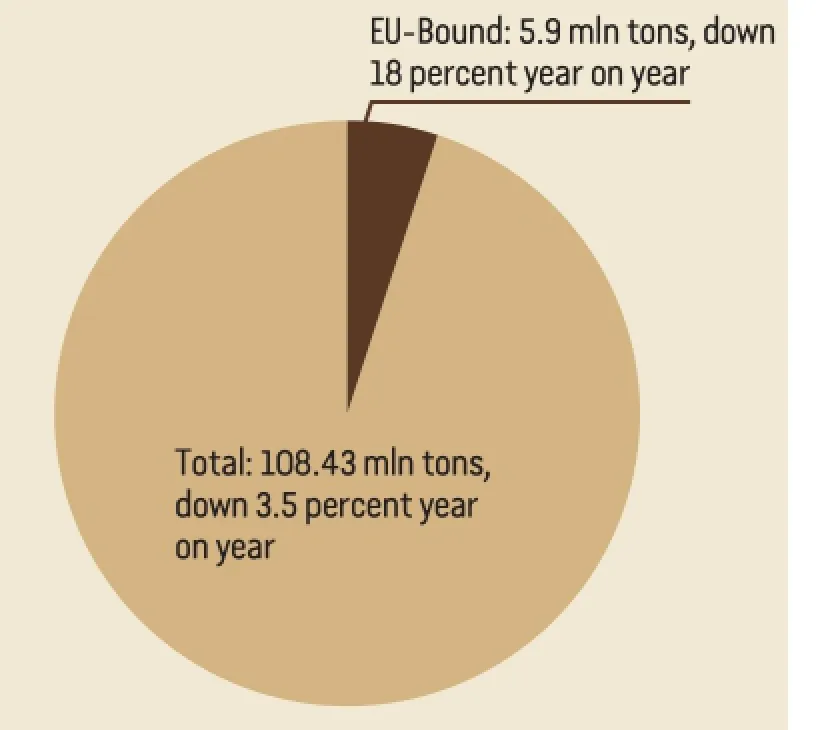AFlawed Verdict
2017-04-24
AFlawed Verdict
By Lan Xinzhen

The European Commission (EC) decided on April 6 to impose an 18.1-35.9 percent anti-dumping duty on imported Chinese hot-rolled steel coil. In response, China’s Ministry of Commerce said it would look into the EU’s protectionism tendencies toward Chinese steel products.
The anti-dumping measures launched by the EU against China have attracted widespread attention owing to the sensitiveness of the issue.
The EC has violated Article 15 of the accession protocol signed when China joined the World Trade Organization (WTO) in 2001. According to the protocol, the surrogate country approach expired on December 11, 2016.
The surrogate country approach was adopted with consideration to the price advantages of Chinese products resulting from low-cost labor and resources. Under the approach, WTO members use costs of production in a third country in anti-dumping investigations against products from countries on its “non-market economy”list, which includes China. The practice allows importing countries to levy high tariffs easily in trade disputes.
At present, the United States, the EU and Japan are still persisting with the approach while over 80 WTO members, including Australia, New Zealand and Switzerland, have dropped it.
The EC has continued to apply the unfair and unreasonable surrogate country approach and uses U.S. production costs to levy high tariffs on Chinese imports, which has damaged Chinese enterprises’ interests.

China’s Steel Exports in 2016
In addition to the hot-rolled coil, other steel products from China such as seamless steel tube bars and cold-rolled fl ats have also been subject to anti-dumping investigations by the EU. Have Chinese steel products really threatened European steel producers? Or, in other words, are dumping practices really involved in Chinese steel exports to the EU?
The answer is no. Chinese steel exports accounted for no more than 5 percent of the EU market in 2015 and declined significantly in 2016. The EC accusation that Chinese hot-rolled coil has damaged and threatened the EU steel industry lacks factual basis.
Currently, the steel industry worldwide is haunted by overcapacity, with steel workers’ income shrinking and unemployment increasing. Moreover, the specter of the EU debt crisis lingers and the EU economy remains sluggish. As a consequence, steel workers in Europe staged multiple protests to voice their discontent in 2014 and 2015. The EU has therefore imposed hefty anti-dumping duties on Chinese steel products in a bid to ease the pressure from within.
Protectionism is to no avail in solving the global problem of steel overcapacity. It will only disrupt the order of international trade and harm the sustainable development of the global steel industry.
At the G20 Hangzhou Summit held in September 2016, G20 members including the EU promised to reduce or at least not adopt new protectionist measures till the end of 2018.
At the 18th China-EU Summit held in Beijing last July, China agreed to the EU’s proposal of establishing a joint working team to allow the EU to check and supervise China’s steel export volume, prices and subsidies to steel producers. The move was aimed at helping the EU decide whether China has taken effective measures to fulf i ll its pledge of cutting overcapacity. However, the EC decision betrays the promise.
Rightful anti-dumping measures are a kind of trade remedy directed at guaranteeing fair competition and promoting healthy global trade. They are supported by the international community. However, in reality, antidumping measures are often used wrongly, as in this case.
Hopefully the EU will realize that negotiations and cooperation are more effective in solving trade frictions than protectionism. ■
Copyedited by Sudeshna Sarkar
Comments to lanxinzhen@bjreview.com
